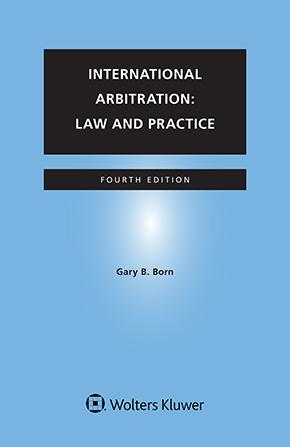Charting the Rise of Arbitration in Canada: Key Takeaways from the Canadian Arbitration Report 2024
August 27, 2025
Canada’s arbitration landscape is evolving rapidly. Recent empirical data provides a detailed snapshot of how arbitration is practiced in the country. The Canadian Arbitration Report 2024 (“Report”), led by Professor Janet Walker and the Honourable Barry Leon and supported by FTI Consulting, profiles the practices of arbitrators, counsel, and experts based in Canada by analyzing their activities over the three-year period from 2020 to 2022. Despite any slow-down during those three years resulting from the pandemic, the choice of arbitration as a means of resolving commercial disputes continues to grow in Canada. The 60-page Report offers robust insights into trends in both domestic and international arbitration, with implications for practitioners, institutions, policymakers, and others. Having followed the evolution of arbitration in Canada from both practice and policy perspectives, we found the Report particularly compelling in how it translates anecdotal trends into quantifiable insights.
This blog post builds on Fasken’s recent publication summarizing the Report’s key findings and aims to further reflect on its significance for the future of arbitration in Canada.
From Anecdote to Evidence: A New Benchmark for Arbitration in Canada
Inspired in part by the 2021 ACICA–FTI study in Australia, this Canadian initiative fills a longstanding gap in the arbitration ecosystem: the absence of data-driven insight into how arbitration is used, by whom, and in what types of cases. The result is a foundational benchmark that will serve the community in assessing progress and shaping future policy and practice.
Importantly, the Report does not rely on editorial interpretation or commentary. Rather, it presents anonymized survey responses across a wide range of themes including diversity, case values, seat selection, institutional vs. ad hoc arbitration, hearing length, settlement rates, and counsel/arbitrator demographics. Readers are encouraged to draw their own conclusions from the raw data—an approach that enhances the transparency and credibility of the findings.
In our own practice, we have seen how having access to this kind of granular data can change the way clients and lawyers approach arbitration—especially in conversations about seat selection, panel composition, and cost expectations.
Canada's Evolving Arbitration Market: Growth and Diversification
One of the most striking findings is the clear upward trend in arbitration work across the country. Among the law firms with established arbitration practices that were part of the survey, 71% reported a 10–25% increase in the number of lawyers doing arbitration work over the three-year period. Roughly 30% also saw a corresponding rise in arbitration-related mandates.
While Toronto remains the dominant hub, other cities—Calgary, Montréal, and Vancouver—are emerging as active arbitration centers with strong local counsel and a growing number of seated cases. One factor driving this growth could be the presence of established arbitral institutions in these cities, such as ADRIC and ADR Chambers in Toronto, and VanIAC (Vancouver International Arbitration Centre) in Vancouver, which provide trusted administrative support and modern hearing facilities. This mirrors international trends: survey data show that when counsel recommends a foreign seat, one of the reasons—cited in 23% of cases—is that the arbitral institution is based there, offering procedural familiarity, logistical advantages, and local expertise.
Moreover, a new generation of arbitration practitioners is taking shape. Nearly one-third of Canadian-based arbitrators surveyed had served in that capacity for fewer than five years. Several younger counsel with international experience in centers such as London, Paris, and New York are returning to Canada and contributing to the professionalization of the field.
Diversity and Representation: Progress with Room to Grow
Diversity remains a key concern—and opportunity—for growth. Few aspects of the Report are as striking—or as important—as the data on who is actually sitting at the arbitral table. The Report shows that:
30% of arbitrators and 36% of counsel in arbitrations were women.
In international cases, 20% of counsel teams were led by women or professionals from underrepresented groups.
Women appeared as testifying experts in one in five domestic cases.
These figures reflect a profession in transition. While representation is improving, particularly among counsel, the path to gender parity—especially among arbitrators—remains long.
Domestic vs. International Arbitration: Different Scales, Different Dynamics
The data reveals significant contrasts between domestic and international arbitration. Domestic arbitration continues to dominate in volume, with most cases valued below C$5 million and hearings typically lasting less than six days. In contrast, international arbitrations often involve higher stakes—nearly half exceed C$20 million—and longer hearings (3 days to 2 weeks for 75% of cases).
Institutional administration is also more common in international arbitration, with ICC, VanIAC, ICSID, and AAA/ICDR being the top choices. Domestic cases, however, are predominantly conducted on an ad hoc basis, often due to perceived cost advantages and client preferences.
Why (Not) Choose Arbitration? Counsel and Client Motivations
One area where the Report aligns closely with our daily experience is in how arbitration is positioned with clients—as a strategic choice, not an automatic default.
When asked whether they recommended arbitration to their clients, a majority of commercial counsel said yes—and those recommendations were accepted three-quarters of the time. However, the decision to include or exclude arbitration clauses is nuanced:
Key reasons against arbitration: desire for an appeal mechanism, client opposition, and cost concerns.
Key reasons for arbitration: efficiency, expertise of decision-makers, confidentiality, and enforceability.
Interestingly, 84% of counsel recommended the seat of arbitration in most cases. Toronto, Vancouver, and Montréal were the top Canadian seats, though nearly 30% of international contracts featured foreign seats—most commonly due to multi-party dynamics, institutional affiliations, or client preferences.
What Does the Future Hold for Arbitration in Canada?
While the Report wisely avoids speculation, it is hard for us, as practitioners, not to be optimistic by the direction the numbers suggest.
The Report paints a reassuring picture: arbitration is not only gaining ground but becoming embedded in Canada’s dispute resolution culture. With more firms investing in arbitration expertise and more clients recognizing its value, the trajectory is clear.
Crucially, the growth is not just quantitative—it is qualitative. Increased participation by women and younger practitioners, deeper international integration, and growing use of institutional arbitration all point to a maturing ecosystem.
While the Report does not directly assess Canada as a seat, the data suggests momentum. For transactions involving U.S., U.K., and European parties, Canada presents a compelling option: a stable legal environment, bilingual and bijural expertise, and increasingly sophisticated practitioners. Key Canadian cities are easily accessible from those centers, and Canada offers a conducive environment and relatively lower costs.
Conclusion
The Report is a milestone. It contains a wealth of information for law firms’ arbitration practice groups, arbitrators, and expert firms, as well as corporate counsel, academics, arbitration institutions and organizations, service providers to arbitration practitioners, and others. It is hoped that this data will help them continue to grow the use and practice of arbitration in Canada in the years ahead.
It includes charts and graphs displaying the data, as well as dozens of wonderful photographs of Canada. The Annexure of over 50 pages, which sets out the data collected from each question posed to survey respondents, enabling anyone to go behind the Report for additional and different observations, is included with the Report.
Finally, the Report captures a profession in motion—diversifying, expanding, and professionalizing. For counsel, arbitrators, institutions, and clients alike, the Report provides not only insights, but implicitly a call to action: to continue building a world-class arbitration environment in Canada.
Law firms and arbitration practitioners certainly should hope that this Report will be the first in a series that allows the Canadian and global arbitration communities to track progress, identify challenges, and work collaboratively to meet the evolving needs of commercial parties.
Co-Chairs of the Report were Prof. Janet Walker, CM and the Honourable Barry Leon. The Survey was conducted, and the data analyzed, by FTI Consulting (led by Tara Singh, CPA, CBV, CFE, Natalie Quinn and Ali Al-Ahmad, P.Eng., Eng., PMP with data analysis support from Soham J. Mehta).
Report: Canadian Arbitration Report 2024 | FTI Consulting
You may also like











